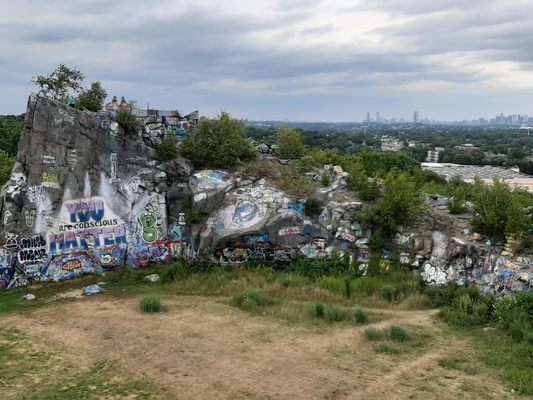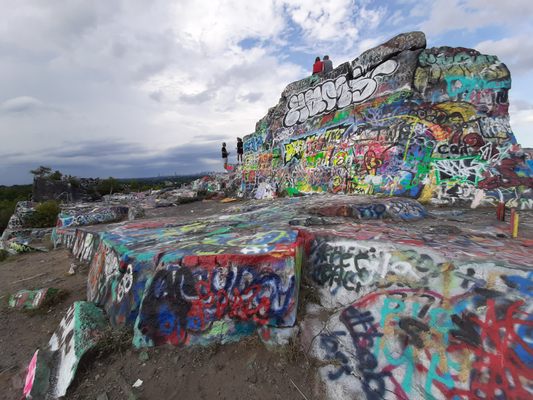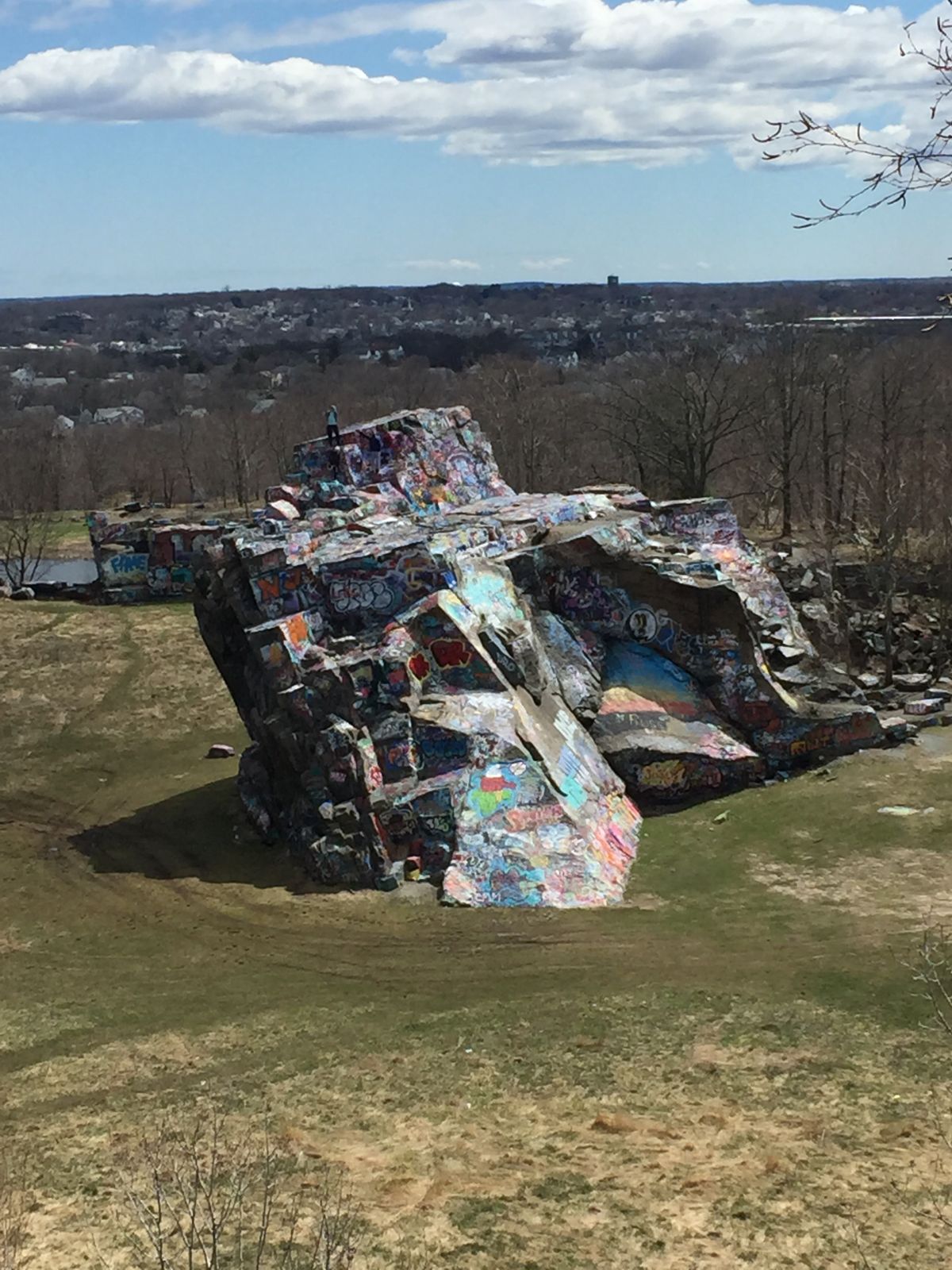About
The city of Quincy made its name on its high quality stone industry, but as the economic landscape changed, the quarries that were once the lifeblood of the area simply became giant holes in the ground that were like catnip to foolish cliff divers. After decades of dumb deaths, they were filled but the site is now open as a garden of graffiti-covered boulders.
Quincy Quarries was first opened in 1825 to supply granite for the Bunker Hill Monument in Boston’s historic Charlestown neighborhood and was actively mined to one degree or another until 1963, constituting the foundation of Quincy’s economy for nearly a century. Once abandoned, the Quarries slowly flooded and became a popular — if dangerous — site for cliff jumping. A number of people began to die jumping into the flooded pits, so in order to curb the practice, a number of wooden pylons were placed sticking out of the water. However, these eventually sank below the waterline, becoming invisible, and deadly. The death toll went through the roof.
After being closed to the public for a number of years in response to the number of deaths, the site was reopened in the early 2000s after dirt from Boston’s "Big Dig" was used to fill in the pits.
Now, Quincy Quarries is linked to the Blue Hill Reservation trail system and is open to the public. Not only an excellent site for rock climbing, it is an extremely interesting place to explore in its own right. It offers an unparalleled view of Boston, and its rock formations are adorned with a spectacular array of graffiti art. The site is best visited on a warm, dry day, as it can best be appreciated from the height of one of its rock outcroppings and these cannot be safely scaled when the stone is wet.
Related Tags
Know Before You Go
Quincy Quarry is not difficult to get to; it is just off Rt. 93, on Ricciuti Drive. Free parking to the right when you go up the road, at the bottom of the site.
Community Contributors
Added By
Published
July 27, 2015




























































































